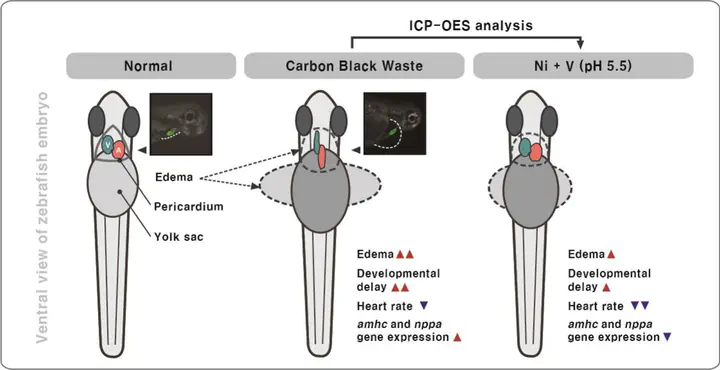Heart developmental toxicity by carbon black waste generated from oil refinery on zebrafish embryos (Danio rerio): Combined toxicity on heart function by nickel and vanadium

Abstract
This study assessed the developmental toxicities of water-soluble carbon black wastes (CBW) extract (1:5, w/v) in zebrafish embryos (Danio rerio). Acute embryonic toxicity was performed following OECD guideline 236. Analysis using ICP-OES revealed that nickel (Ni) and vanadium (V) were predominant in CBW. Embryos exposed to CBW exhibited developmental delay, along with pericardial and yolk sac edemas. Malformed heart chambers were found in the CBW-exposed embryos and heart rates were significantly reduced since 48 h post fertilization (hpf). After RT-qPCR analysis, two cardiac forming-related genes, amhc and nppa responsible for atrial cardiac myofibril assembly and cardiac muscle cell proliferation, were up-regulated after 96 hpf. The increased mortality and delayed yolk-sac development appeared related to CBW-induced decrease in pH to about 5.5. Individual treatments of Ni and V did not cause identical toxic effects as CBW showed. At 100 ppm, V had a pH of approximately 5.5, causing developmental delay and pericardial edema in zebrafish embryos. At the same pH, combined Ni and V induced morphological anomalies and reduced heart rates similar to CBW-exposed embryos. Conclusively, this study demonstrates that environmental runoff is a serious concern, and thus, CBW incineration bottom ash should be treated carefully before disposal in landfills.